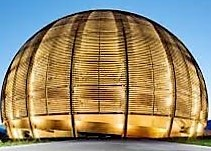Speaker
Description
Short-lived radionuclides, i.e. radioactive isotopes with half-lives of less than 100 Ma, were present as primordial isotopes in the proto-solar cloud and during the formation of our solar system. The origin of specific short-lived radionuclides is still a matter of dispute. Because of their comparatively short half-lives, these isotopes are no longer present in cosmic samples today, but are evident as enrichments of their decay products, e.g., in meteorite samples.
An notable case is $^{53}$Mn, which is likely one of the most abundant short-lived radioisotopes. In fact, the majority of $^{53}$Cr, the second most abundant stable chromium isotope, originates from the decay of $^{53}$Mn. S. Sahijpal modeled the general galactic chemical evolution of the local cluster of stars surrounding our solar system over galactic timescales [1]. $^{53}$Mn can be efficiently produced in supernova explosions and ejected into the interstellar medium to reach our solar system. Analysis of manganese crust samples from the deep sea shows layers with elevated 53Mn abundance, indicating sedimentation after supernova explosions [2]. Furthermore, analysis of about 500 kg snow sample from Antarctica has shown that $^{53}$Mn is still now continuously deposited on Earth [3].
In contrast to other short-lived isotopes, $^{53}$Mn can also originate from spallogenic reactions with already condensed material. The estimate of this production route and its relationship to the amount produced in supernovae events has not yet been conclusively understood. Secondary particle reactions are one of the essential components in this debate. However, the dominant nuclear reactions in this scenario are proton- and neutron-induced reactions on iron. In such an environment, one must also consider the subsequent reactions of $^{53}$Mn. In any case, the synthesized $^{53}$Mn must pass through regions of high neutron density and is therefore subject to further nuclear reactions that will modify the overall $^{53}$Mn content. One of the possible reaction causing such an effect is neutron capture.
Due to the rarity of $^{53}$Mn on Earth - it occurs in usable quantities only in meteorites - the measurement of nuclear properties is challenging. Consequently, only the thermal neutron capture cross section has been determined so far with samples containing about 10$^{13}$ atoms of 53Mn. Through the ERAWAST (Exotic Radionuclides from Accelerator Waste for Science and Technology) initiative, a supply of about 10$^{19}$ atoms of $^{53}$Mn was obtained from proton-activated materials at PSI. Some of these were used to produce samples for measuring neutron capture cross sections of $^{53}$Mn at different neutron facilities. Thus neutron capture cross sections were measured in a wide range of neutron energies, from very cold neutrons to stellar neutrons, using different neutron facilities [4].
Acknowledgment:
We would like to thank T. Jenke, St. Roccia and U. Köster at the Institut Laue-Langevin (France) for the support conducting experiments at the very cold neutron beam line PF2; N. Kneip, D. Studer, T. Kieck, and K. Wendt of the Johannes Gutenberg-Universität Mainz (Germany) for preparing samples using the RISIKO off-line laser mass separation facility for the experiments at the PF2 beam line; L. Viererbl ,M. Vinš, H. Assmann-Vratislavská of the Research Centre Řež (Czech Republic) for conduction the thermal and epithermal neutron activations at the research reactor LRV-15; O. Aviv, A. Barak, Y. Buzaglo, H. Dafna, B. Kaizer, D. Kijel, A. Kreisel, M. Tessler, L. Weissman, Z. Yungrais of the Soreq National Research Center (Israel) for providing the proton beam at the LiLiT Neutron Source at SARAF and support and participating in the experiment at stellar neutron energy; M. Paul and E. Peretz of Racah Institute of Physics at the Hebrew University Jerusalem (Israel) for participating and co-analysing the experiment at stellar neutron energy; as well as the following colleagues of the Paul Scherrer Institut: M. Ayranov and T. Wieseler for elaborating the chemical extraction methods and performing the purification to create the stock of $^{53}$Mn; P. Sprung for determining the total $^{53}$Mn quantities of the used samples via ICP-MS measurements and A. Kaestner for support to perform experiments at the cold neutron beam line ICON at the neutron source SINQ at PSI.
[1] S. Sahijpal, J. Astrophys. Astron. 35 (2014) 121
[2] G.Korschinek, et al.: Phys. Rev. Lett.125 (2020) 031101
[3] D. Koll, et al.: Phys. Rev. Lett. 123 (2019) 072701
[4] J. Ulrich, PhD thesis 2020, High precision nuclear data of $^{53}$Mn for astrophysics and geosciences, University of Berne, Switzerland
